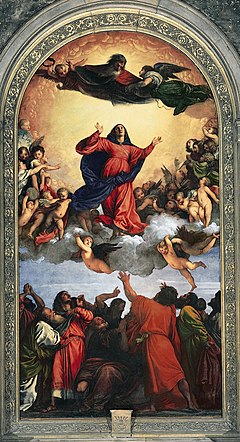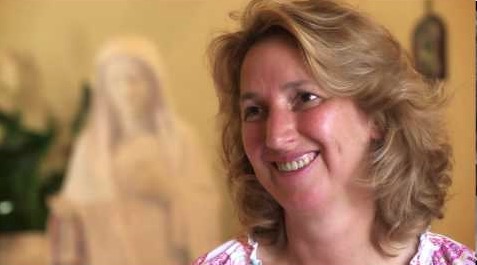There it was, in undeniable print, on live-streams, in videos, in photographs, for all with eyes and ears:
A drama on two huge fronts.
 One: the Church.
One: the Church.
There was the stunning Consecration of Russia to the Immaculate Heart of Mary, as requested in 1917 at Fatima — stunning in several keys ways. Not since Pope Pius XII proclaimed the Dogma of the Assumption in 1950 was there such a public display of Church action coupled with supernaturalism.
During that proclamation years ago, Pius saw the “miracle of the sun,” likening it to the descriptions from Fatima. Thus were apparitions of Mary involved.
One could possibly go back even further, to 1884 and the vision Pope Leo XIII reportedly had of Satan assuming extended power over the earth, which led that Pontiff to refine and institute the Prayer to the Archangel Michael. That too had been in the mystical realm.
There was the historic component: Here the Consecration conducted last Friday brought to mind previous such consecrations linked to Fatima, one of which, in 1984, by John Paul II, did not mention Russia by name but led, according to a Fatima seer, to the fall several years later of Communism first in Eastern Europe and then the diabolical Soviet Union itself. There was a “period of peace,” as promised at Fatima — but only, as we have seen, a period.
In a surprisingly hard-hitting prayer that struck at the Ukrainian war, Pope Francis boldly challenged one of the three most powerful nations on earth, while castigating the rest of humanity for its waywardness — which he indicated had led to the current crisis.

There was the theo-political aspect: Pope Francis, widely perceived as “liberal,” not only consecrated Russia, but did so in a fashion dear to the hearts of most traditionalists, conducting it in union with all the bishops as well — crucially — as naming Russia (twice). This went a step further than actions taken by previous Popes considered more conservative and led even to a major liberal Catholic columnist pondering whether Francis is a closet “traditionalist.”
That in itself was enough to startle — and lent an opportunity for healing rifts, for not in many years has the Church appeared as united as it did on Friday, with uncounted Catholics worldwide reciting the Consecration prayer together.
There was the tie to Medjugorje — which Pope Saint John Paul II called “the fulfillment of Fatima.”
The very day of the Consecration — March 25 — was not just the hugely major Marian feast of the Annunciation, but also the day (the twenty-fifth of each month) that the Virgin at Medjugorje still relates a message for the world. The message on Friday, March 25, 2022, was directly connected to the Consecration — to an action of the Church — in a way never seen before.
In his prayer of Consecration, the Pope implored the Blessed Mother to bring peace and said, “Now with shame we cry out: Forgive us, Lord!”

In the Consecration prayer, Pope Francis mentioned “the mystery of iniquity that is evil and war.”
In her message at Medjugorje that same day, Mary said, “For years, Satan has been fighting for war.”
The Pope, in his prayer, said the Consecration was coming “at this dark hour.”
At Medjugorje, Mary had once said the world was covered with darkness and that the current moment was “the hour of the power of darkness.”
The Consecration prayer implored Mary under several titles, including “Queen of Peace” — the title by which she goes at Medjugorje. Just as the Pope named the sinfulness of mankind as leading to the war, Mary said she was inviting humanity “to be good on earth and overcome the crisis you fell into because you did not listen to God.”
(There was also a link to another supernatural devotion, “Our Lady, Undoer of Knots,” when, calling out to Mary, the Pontiff said, “you are able to untie the knots of our hearts and of our times.”)
Was there a tie between the Consecration and the secrets at Medjugorje?
The Pope mentioned “the menace of nuclear weapons.”
In an interview after the Medjugorje message, Marija Pavlovic-Lunetti, the seer who receives it, when asked by a priest named Father Livio Fanzaga who interviewed her if she thought “there is a danger of a nuclear world war” (or whether it was “just the devil’s way of frightening”), replied, “Er, I don’t want to go into the secrets.”
One might add that the Medjugorje message directly cited a war — the Russian-Ukrainian one — as did a secret at Fatima, which mentioned World War One and World War Two by name. That the Consecration took place during pandemic and military confrontation brought to mind how Fatima occurred after the First World War and just before a historic pandemic of influenza.
What does it mean — as the message said (read it in entirety here, and the Consecration prayer here) — that “humanity is at a crossroads”?
This is the question of the hour.
A crossroads is an endpoint, a final decision, choosing one way or the other, in this case between worldliness and the darkness of Satan and the Light of Jesus and God. Events seem to be concatenating in a way that draws ever closer to secrets.
Yet Marija also said, “Did you see me upset Father Livio?” and when the questioner (from Radio Maria) replied, “no,” continued:
“We believe as Our Lady says: ‘I listen to your cry and your prayers.’ And as she herself has told us a thousand times: ‘God has allowed me to be among you to help you.’ I am convinced that this is exactly how it has been in these forty years of her presence. Humanity is at a crossroads and as Our Lady said in various messages, Satan is free from his shackles in this new millennium. We know that evil also exists through our selfishness and our arrogance.
“Often, we too do evil things because we do not have that sensitivity and that love of God that is within us, but we live with the humanity of a rebellious man without following the commandments. Precisely for this reason, she is here, with her sweetness and constancy, for forty years among us, to tell us that God is with us, and we must not be afraid.”
[resources: books on Medjugorje and Fatima]
+


